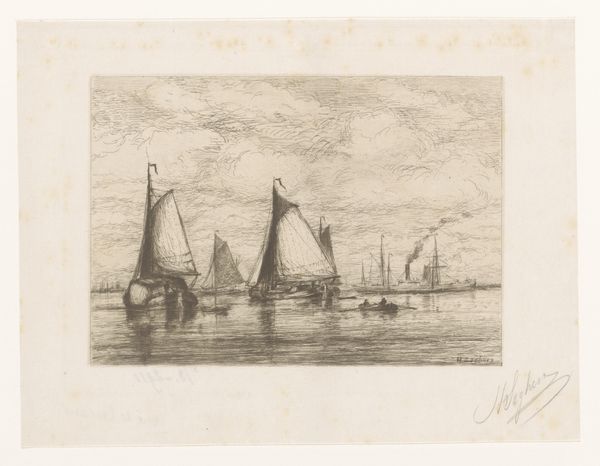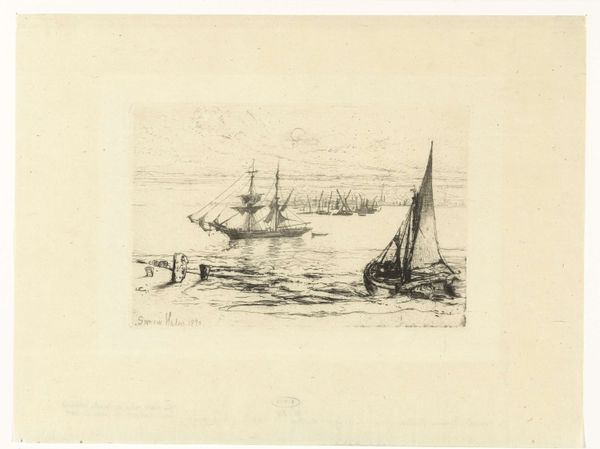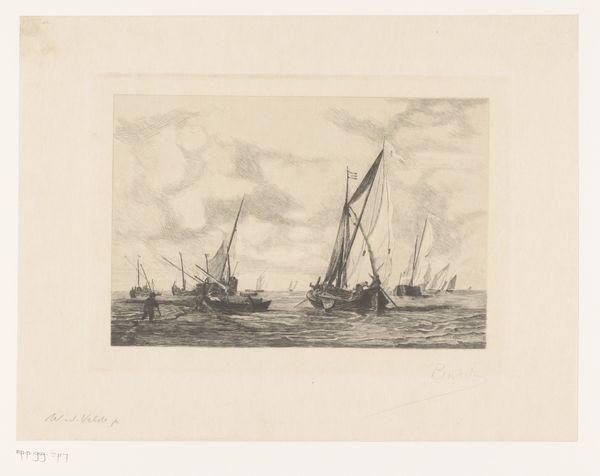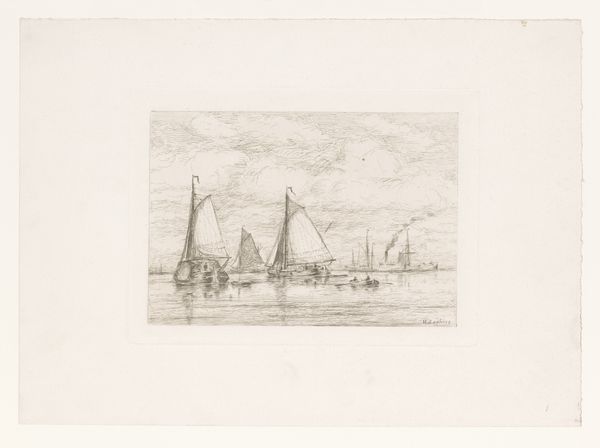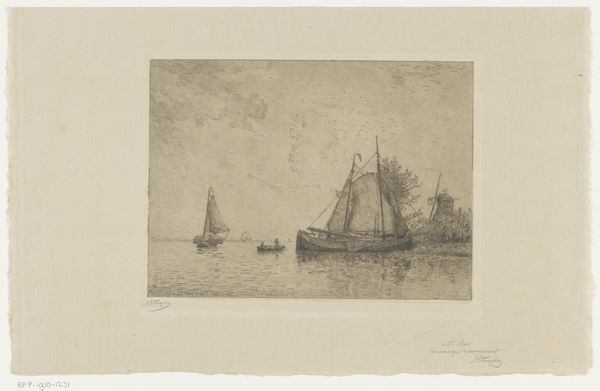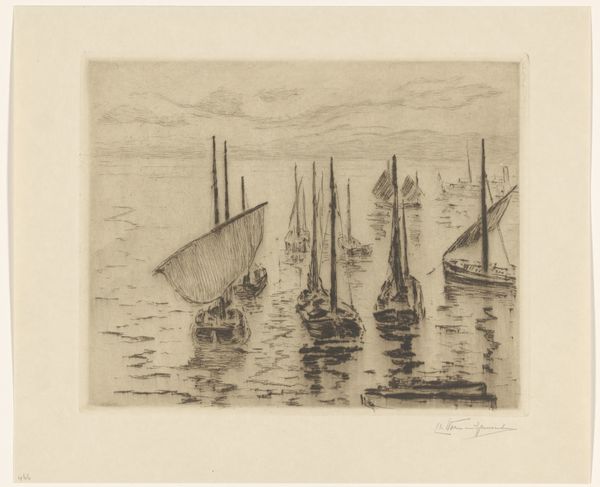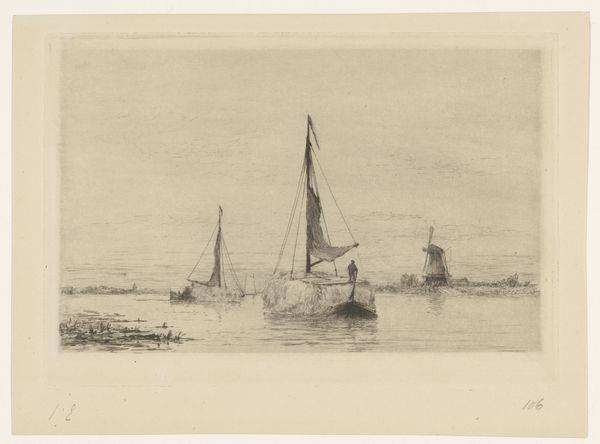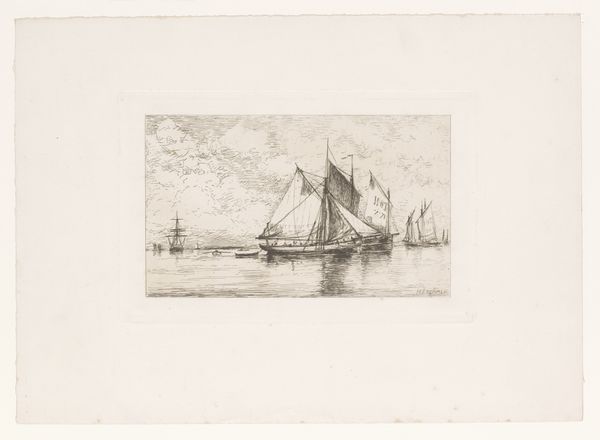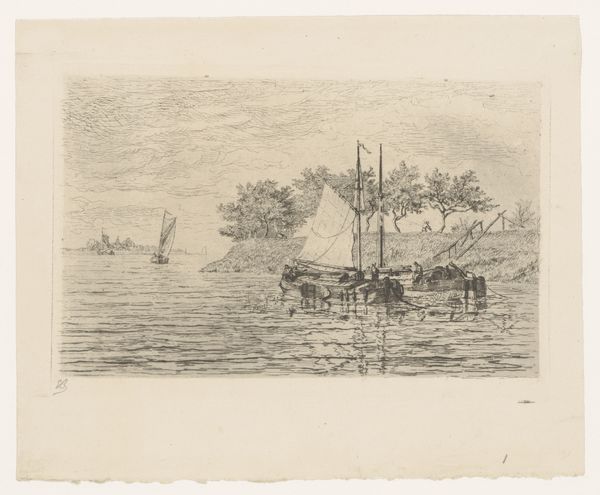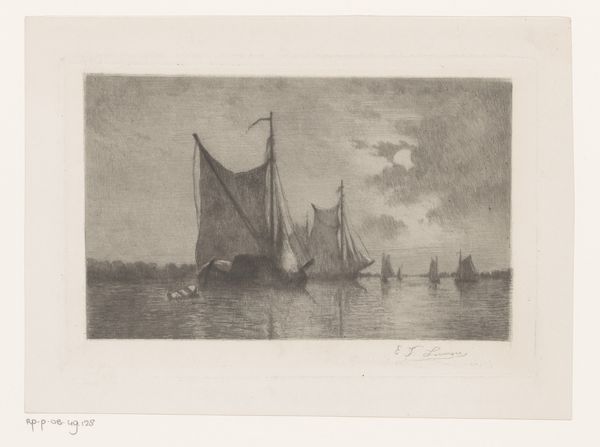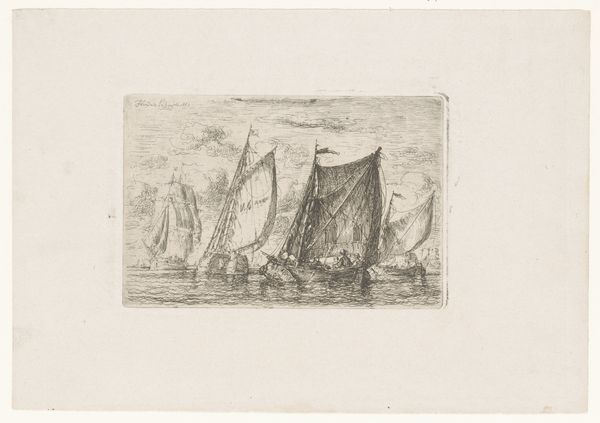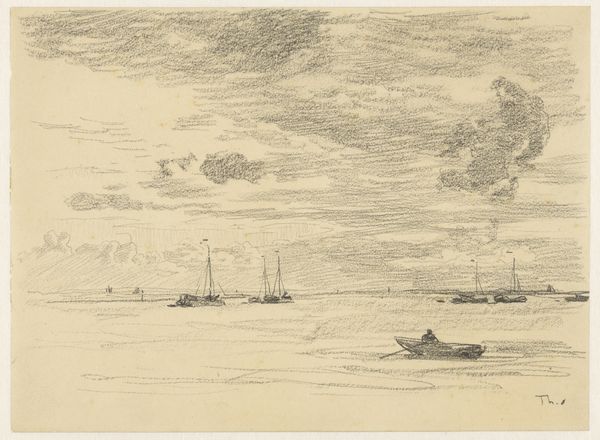
print, etching
# print
#
impressionism
#
etching
#
landscape
#
cityscape
Dimensions: height 155 mm, width 213 mm
Copyright: Rijks Museum: Open Domain
Curator: Let's turn our attention to "Lagune bij zonsondergang" or "Lagoon at Sunset," an etching by Carel Nicolaas Storm van 's-Gravesande. Dating sometime between 1851 and 1924, this work captures a cityscape within a coastal scene. What's your immediate impression? Editor: Mmm, melancholy. A muted, wistful quiet hangs over everything, like a memory fading into the haze. The world rendered in these delicate shades of grey, feels like a poem whispered by the wind. Curator: 's-Gravesande, through his prints, engaged deeply with the visual culture of his time, particularly the evolving relationship between landscape and urbanization. Etchings like these were significant in distributing imagery, contributing to a broader understanding and aesthetic appreciation of place. Editor: Definitely. It's more than just representation though, it's also the texture he's conjuring here, with those shimmering water reflections, its quite evocative! There’s this sense of constant, subtle movement as the city begins to twinkle on the distant horizon. What was the pull towards depicting these hybrid spaces? Curator: Urbanization was rapidly changing the Dutch landscape. Artists like 's-Gravesande sought to document and, in some ways, idealize these scenes. The “Lagune” offers a nuanced view of a space caught between nature and urban development. The composition frames nature not in opposition, but co-existing. Editor: It does strike me that that interplay of light and shadow is pretty masterfully handled! The sun's setting sends a shiver across the waters surface. The overall tonal effect almost tricks the eye into believing its far larger and more vibrant than the physical dimensions actually suggest. There is a real sense of theatre here! Curator: Absolutely. 's-Gravesande's prints were popular partly because they democratized art; offering affordable images to a wider public. They spoke to a growing desire to connect with place, whether rural or urban, but always carrying implications regarding progress. Editor: Yes, it makes you consider this fragile existence; all is fleeting like a summer afternoon, right? Well, thanks for adding historical perspective on what’s essentially just a lovely little picture. Curator: My pleasure. This glimpse into art and societal change enriches our appreciation of art beyond mere aesthetic consideration.
Comments
No comments
Be the first to comment and join the conversation on the ultimate creative platform.
